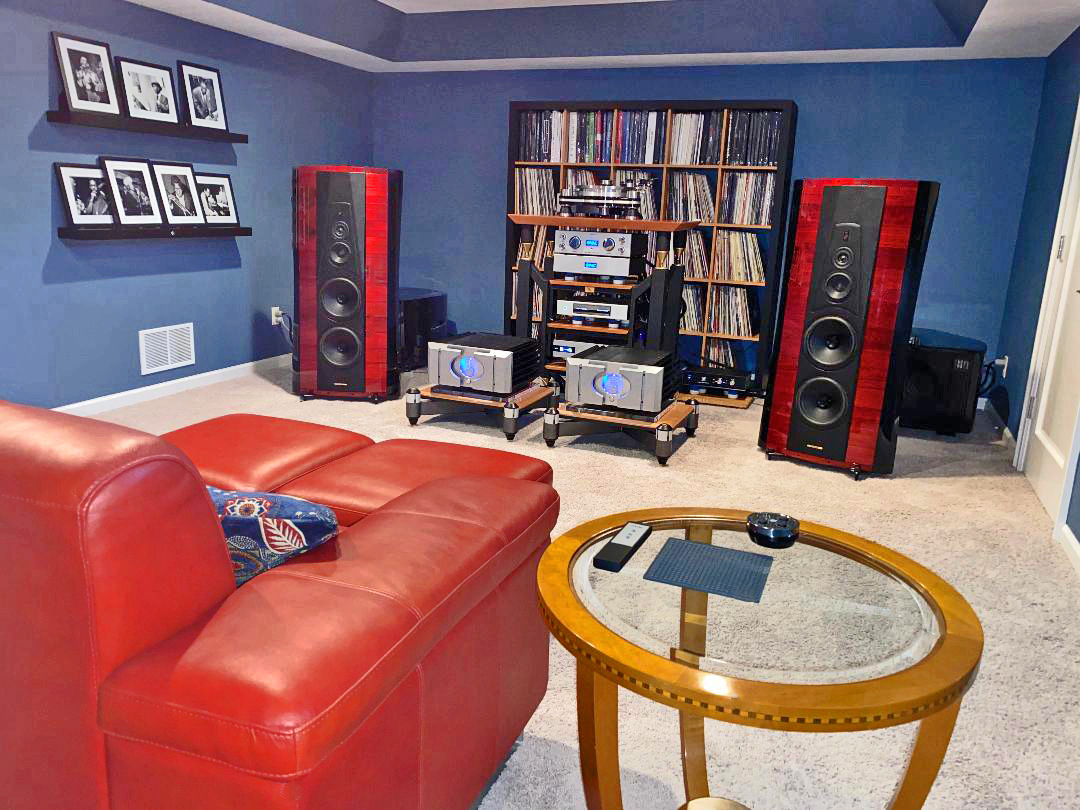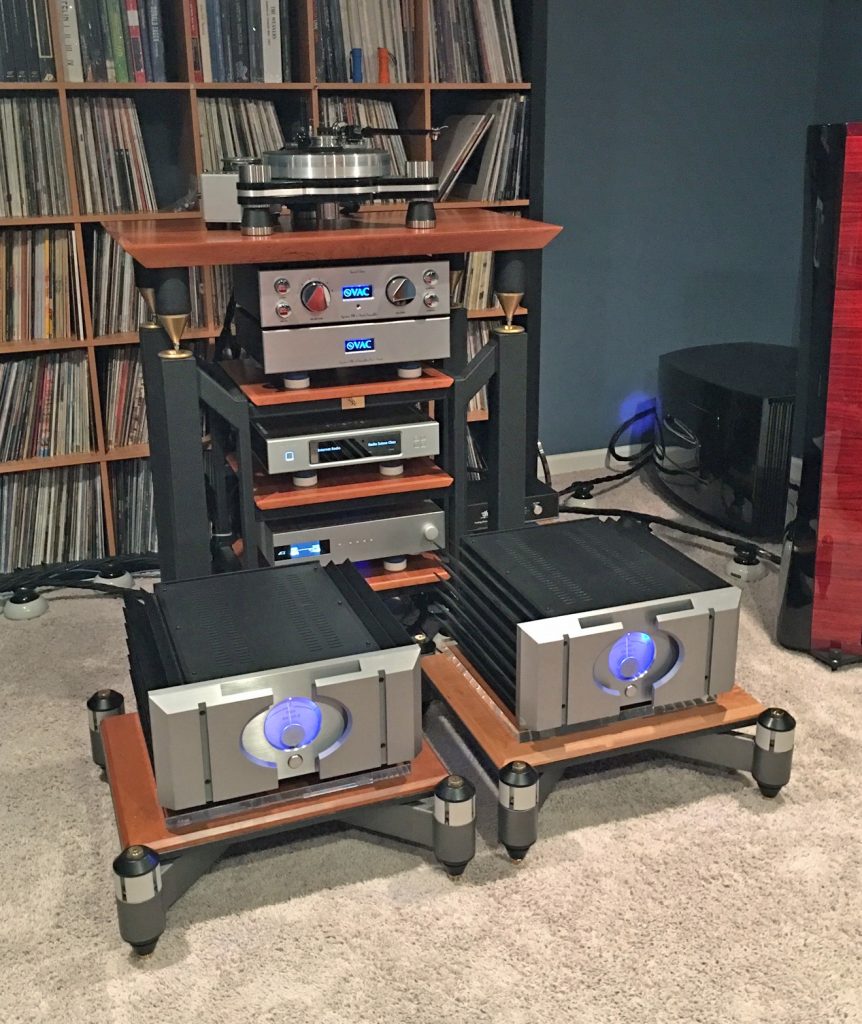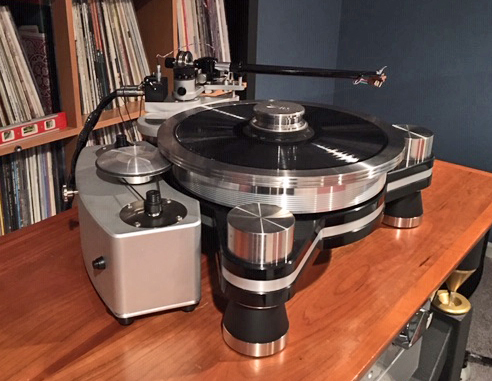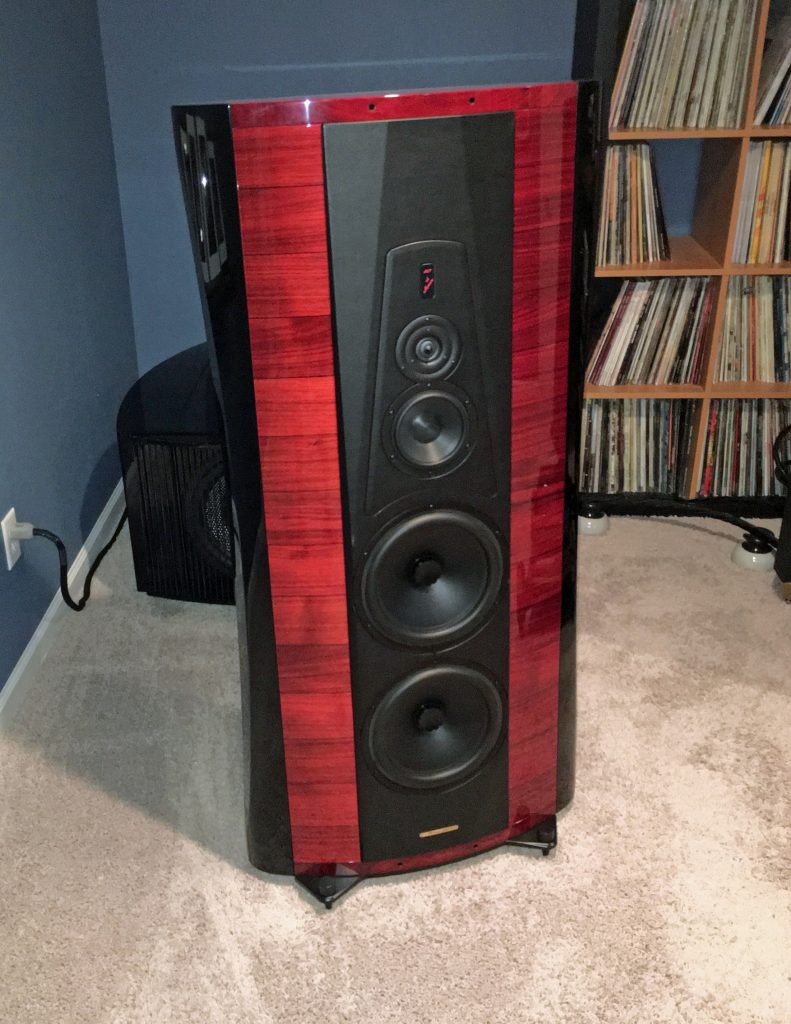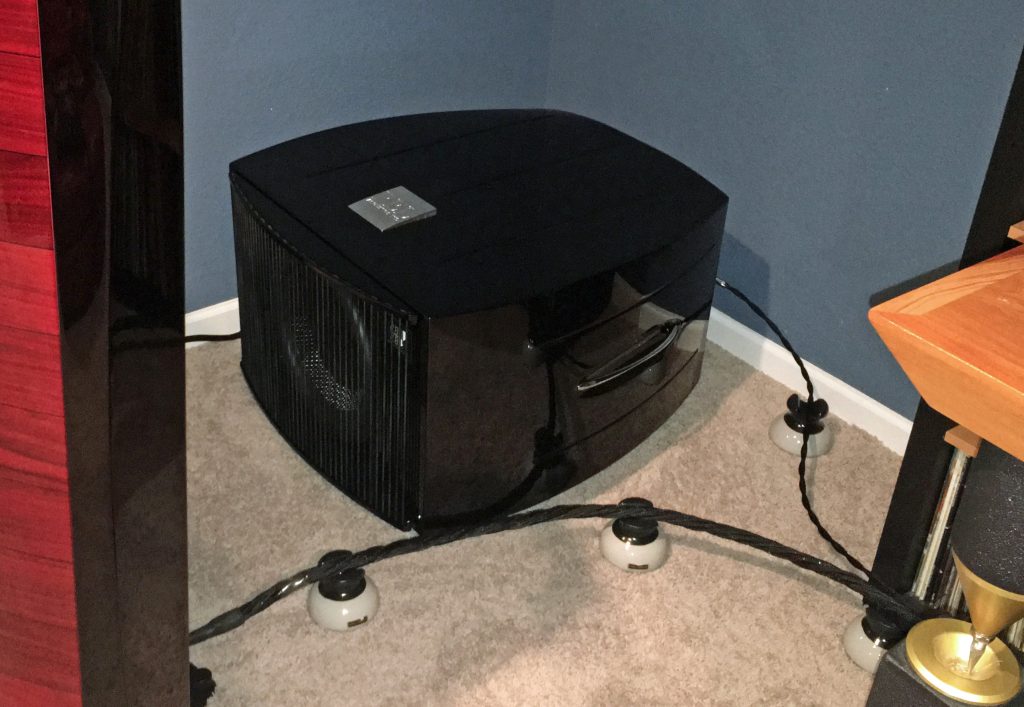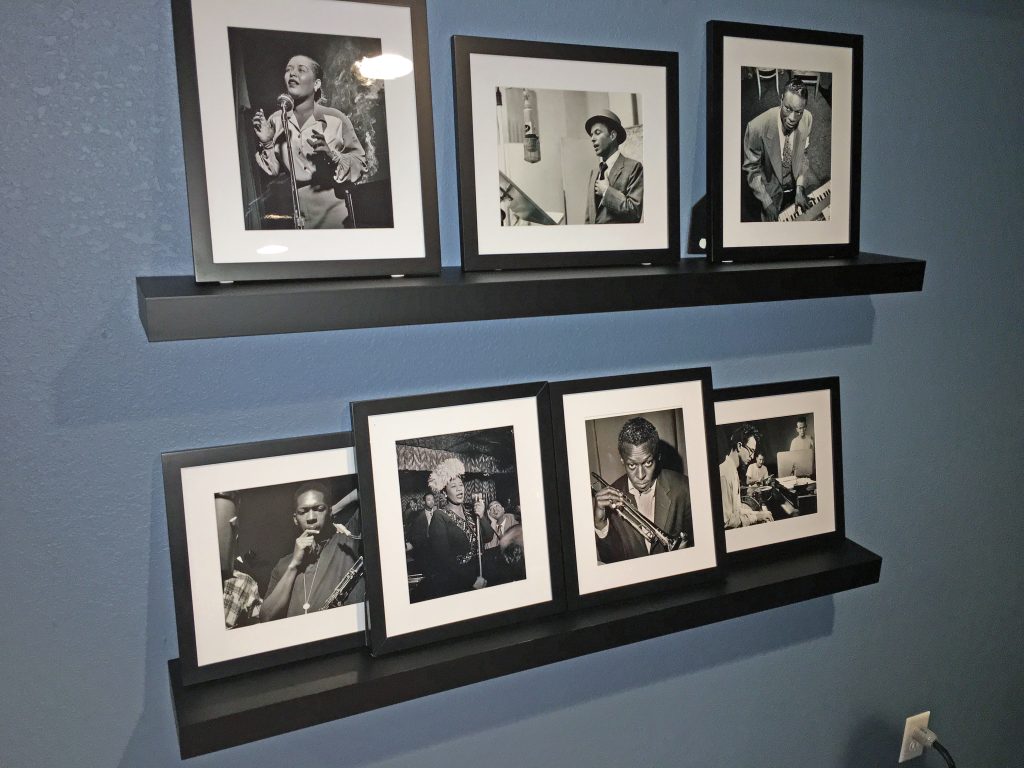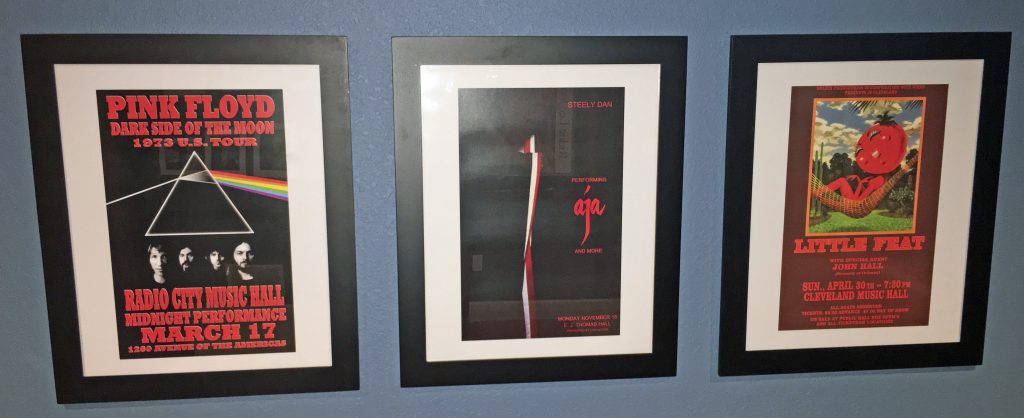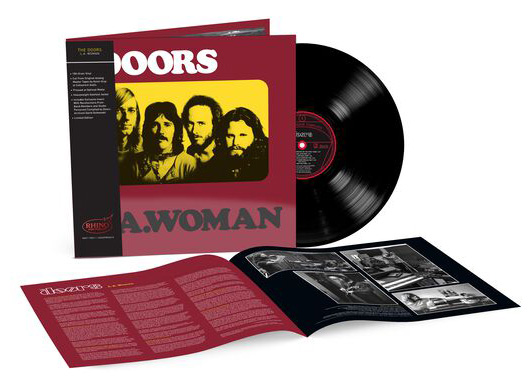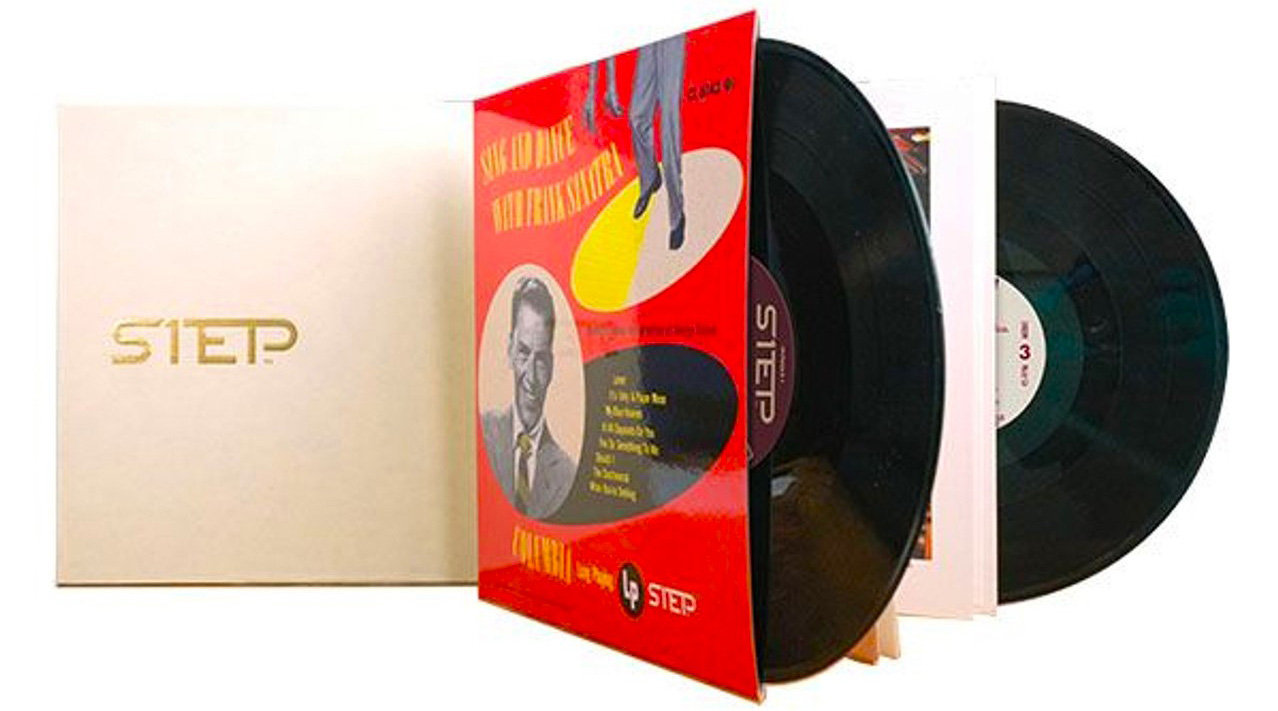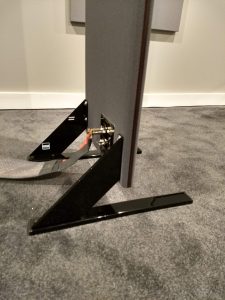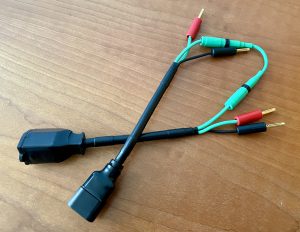As mentioned in some of my recent reviews, I have really settled in on the basic building blocks in my current system. Click on my name above in red for a complete list and description. Even during the lockdown, I never thought twice about making any major changes. This despite plenty of time reading about and reviewing other components that might have peaked my interest and opened my pocketbook (the ever lurking nemesis of all audiophiles). VAC, Pass Labs, VPI, DCS, Aurender, REL and Sonus Faber have all served me well and continue to do so. What I have focused on lately are the additional "nuances." It turns out that these nuances are extremely important if not critical.
I am a strong admirer of Synergistic Research and their extensive portfolio of products. When it comes to cable and power cords, they remain one of our key industry leaders at all price points. Like Pass Labs, I always seem to come back to Synergistic Research after experimenting with other options. Again, my focus is now taking that next step beyond the traditional upgrades and substitutions. Synergistic Research has wowed me with several new products that were never high on my priority list, but in retrospect, they should have been right there near the top all along.
Power and ground conditioning are two areas that many audiophiles are slowly but surely investing in with fantastic results. This includes me. Please see my reviews of the Synergistic Research PowerCell SX Power Conditioner and Galileo SX Ground Block HERE and HERE. New to the party is the Synergistic Research Ethernet Switch UEF. In a nutshell, this device can basically condition or clean up the Ethernet connection from your home router to your listening room for streaming both music and video. This important trilogy of power, ground and Internet connectivity are clearly variables that can now be managed much better and with very impressive results.
Caveat Emptor
System synergy and personal taste are critical when evaluating high-end audio products. This review is based on my subjective requirements, my subjective ears, my specific system configuration, and my specific listening room. This combination is only one data point of many that exist out there for these components. Please consider my comments and analysis appropriately.
Design
Ethernet switches are not new. Many can provide additional functionality beyond basic Ethernet connectivity and input/output switching. Like me, many audiophiles probably run an Ethernet cable at a great distance, or at a least a significant distance, from their home router to their music server or other similar components for streaming. This hardwire connection can help tame the buffering issues that wireless connections can sometimes generate. In my home, the router is located two floors away from my listening room at almost 40 feet. It makes sense that this long run of cable is going to pick up various elements of RF and other electrical noise that could impact a digital signal.
Enter the Synergistic Research Ethernet Switch UEF, which is very much up to the challenge. With remarkable results, Synergistic Research has taken the technology and experience that has been utilized in their Powercell and Ground Block products and have now implemented them within the design of the Ethernet Switch UEF. This basically includes the UEF and EM Cell technology along with certain features in their Tranquility Base design. The crowning stroke is a very attractive chassis milled from a solid billet of aluminum combined with carbon fiber to eliminate vibration and for resonance control. Lastly, the Ethernet Switch UEF can be connected directly to the Ground Block for additional ground management. Please see the Synergistic Research site for more detailed information on these design elements and the technologies utilized.
Sound
My listening habits break down roughly in the following way: 60% vinyl, 30% digital via local files, and 10% digital via streaming. I use both Tidal and Qobuz for streaming. Each of these services have their own positives and negatives, but I greatly enjoy what they both can offer. When I want to listen to digital for long term serious listening sessions, and for the best sound quality, I rely mostly on the local files stored on my Aurender N-10 Music Server. Don't get me wrong, I often stream music for extended sessions, but I primarily use streaming for investigating new music that is not currently in my analog or digital collections. The sound quality when streaming is still excellent, but to my ears and via my system, there is just something missing when it comes to proper harmonic structure and tone when compared to vinyl and local files.
The Ethernet Switch UEF has dramatically changed my listening behavior. With it in place, I can now experience streamed music with something very close if not the equal of my very best local files. In some cases, I even prefer it over vinyl. There is now a more fundamentally correct amount of coherent attack, sustain and decay in the playback. There is a purity and lucidity that avoids fatigue and rewards timbral purity. All of this without the edge and grain that seemed to be the norm for most streamed music in the past. Bottom line. When streaming, I am now more emotionally connected than ever to the music!
Music
For this review, I am going to work through a playlist of independent tracks that I found very telling about the overall sound quality of my system when I added the Ethernet Switch UEF. Of course, Qobuz and Tidal made this very easy. Both allow you to build your own playlists. Both can provide many more CD quality and high resolution titles than what I own and store locally on my music server.
One personal objective of all of this was to find a way to really dig into and finally realize the potential of streaming high resolution files. This includes PCM formats utilizing 24-bit/48kHz, 24-bit/96kHz, 24-bit/192kHz, and also DSD formats utilizing DSD128 and DSD256. For me, access to these vast libraries of high resolution titles can be one of the true values when considering these streaming services.
If you do stream music and if the following tracks are new for you, I highly recommend that you check them out. It might just stimulate something new for your collection or your own playlists. One of my greatest joys is sharing my music with friends and family and via versa. Send me your recommendations!
Robert Plant & Alison Krauss, Raise the Roof, "The Price of Love" (Tidal MQA 24-bit/48kHz)
A fantastic sounding new release overall, but on this particular track, there is a whole bunch going on and it can be difficult to sort it all out. Via digital, Allison has a slight amount of sibilance in her voice throughout the song and the various guitars can sometimes have you wincing when they gather some steam. With the Ethernet Switch UEF in place, Allison's voice is creamy smooth and without any loss of inner detail. Guitars and percussion are now much more naturally presented and full-bodied. The results are easy to identify and it can be tough to differentiate this digital playback from my excellent vinyl pressing!
Buena Vista Social Club, Lost and Found, "Black Chicken 37" (Qobuz FLAC 24-bit/48kHz)
This track will sound fantastic on any system, so I was amazed that the Ethernet Switch UEF could step it up to another level. The depth and breadth of the soundstage is outstanding regardless of source. When the bongos kick in, you will impressed by the superb dynamics and extended spatial cues. When engaging the Ethernet Switch UEF, your room boundaries will evaporate in all directions. The band is now in the venue with you. The bongos are unleashed with additional color and tone and with a bottom end wallop that might just startle you. Goose bump city!
Radiohead, Kid A, "Everything In Its Place" (Qobuz FLAC 16-bit/44kHz)
Kid A is an absolute masterpiece IMHO. The ambient/electronic foundation of all these songs is quite addictive. For this track, the Ethernet Switch UEF provides additional texture and weight to the mids and lower frequencies. Thom Yorke's vocals are obviously presented through some type of synthesizer effect, but now it is clearly delineated without smear and grain. I actually prefer the streamed results over both my local file copy and several versions on vinyl.
Bullitt (Original Soundtrack), "Ice Pick Mike" (Tidal MQA 16-bit/44kHz)
If not familiar with this release, Bullitt is highly recommended for any collector of Soundtracks who enjoys the unusual (and for all Audiophiles too). The track "Ice Pick Mike" can be quite challenging for your listening system. Via the Ethernet Switch UEF, we have a much more defined and explosive brass section. You get the proper metallic blast and blatt without strain. The piano is now wonderfully fleshed out with plenty of timbral purity and proper weight. High hat cymbals have never sounded better. Exciting stuff!
Concha Buika, Niña de Fuego, "Volver, Volver" (Qobuz FLAC 16-bit/44kHz)
Another outstanding female vocal recording with just a slight amount of hardness in Concha's voice—especially during her emotional peaks. Acoustic guitar is exciting, but don't crank it up too loud or you might just jump out of your listening seat at certain crescendos. Add the Ethernet Switch UEF, and not only does everything settle down, but you also get a better sense of air and ambiance around Concha's voice and all the instruments. Superb dynamics still remain. She now stands before you with an amazing amount of natural presence and three dimensional sound!
Wayne Shorter, Speak No Evil, Witch Hunt (Qobuz FLAC 24-bit/192kHz)
I've got this title on Music Matters and Blue Note Classic vinyl. One of my favorites, so I know it well. With the Ethernet Switch UEF leading the way, we have something very special here. I was amazed at the amount of dynamic headroom and lifelike immediacy, all without the typical digital glare that seems to be the norm when streaming. Even piano, which when recorded by Rudy van Gelder can sound so feint and heartless, has just the right amount of sonic texture and impact. Trumpet and tenor are properly burnished and full of attack. This is digital done right.
Final Thoughts
The Synergistic Research Ethernet Switch UEF was a real eye and ear opener. I love my vinyl, but if I had a need to downsize or simplify my system and depend primarily on a streamed digital source, there is no question that I would be very satisfied when utilizing the Ethernet Switch UEF. Even if I had a full rack of world class analog and digital components, and wanted the ultimate in streaming sound quality as one option, this product would have to be a strong consideration if not essential.
As mentioned earlier, it is quite astonishing that so many high resolution titles can now be accessed through various streaming services. I feel strongly that high resolution is a key to one day approaching the absolute sound—the potential still needs to be further tapped. With the Ethernet Switch UEF and these services, I can now take full advantage of this opportunity and reach even further into this potential. Yes, I can obviously listen to streamed high resolution files without the Ethernet Switch UEF, but I find myself much more motivated to do so based on the improvement in sound quality with it in place. The difference is easy to hear and easy to appreciate.
There are products that can be considered just the icing on the cake. This is not that. The Ethernet Switch UEF provides a dramatic step forward for streaming and digital performance. It is an important component and without question a real game changer. Congrats to Synergistic Research for another outstanding design and for the superb product execution. Ted Denney, Andy Wiederspahn, and the entire team at Synergistic Research have rolled out another winner. Very highly recommended!
SR Ethernet Switch UEF
Retail: $2295 110V
Retail: $2595 230V
Includes 5ft Foundation 12awg AC cable and SR Orange Fuse
- Dimensions - 2.6″h x 10″w x 6″d
- Weight - 6.2 lbs.
Synergistic Research Inc.
1736 E. Borchard Ave.
Santa Ana, CA 92705
949.476.0000
NOTE: We understand that for many, the ability of a switch to "alter" the sound defies what they know and/or understand about networks (cables, switches, protocols, etc.). With that in mind, we are not going to approve comments that attack the review or the reviewer (the fact that you can see your comment within the DISQUS window is so you can see what you wrote. It is not public till we approve it, so no, we are not removing your comment as it never really appeared. We just are not approving the comment, so yes, it does go away. That is, you can no longer see it.) The review is what one person experienced using a device and/or component. It is clearly subjective as are all of our reviews. It was what they heard with the item in their system. Whether that fits into your knowledge base or experiences, well, can't help you there. It is what it is. On the other hand, if you disagree with what one of our reviewers heard and or wrote, that is you heard something differently, then we are fine with a civil discourse on these differences. Other than that, we will not approve disparaging comments regarding a reviewer or what they experienced.














